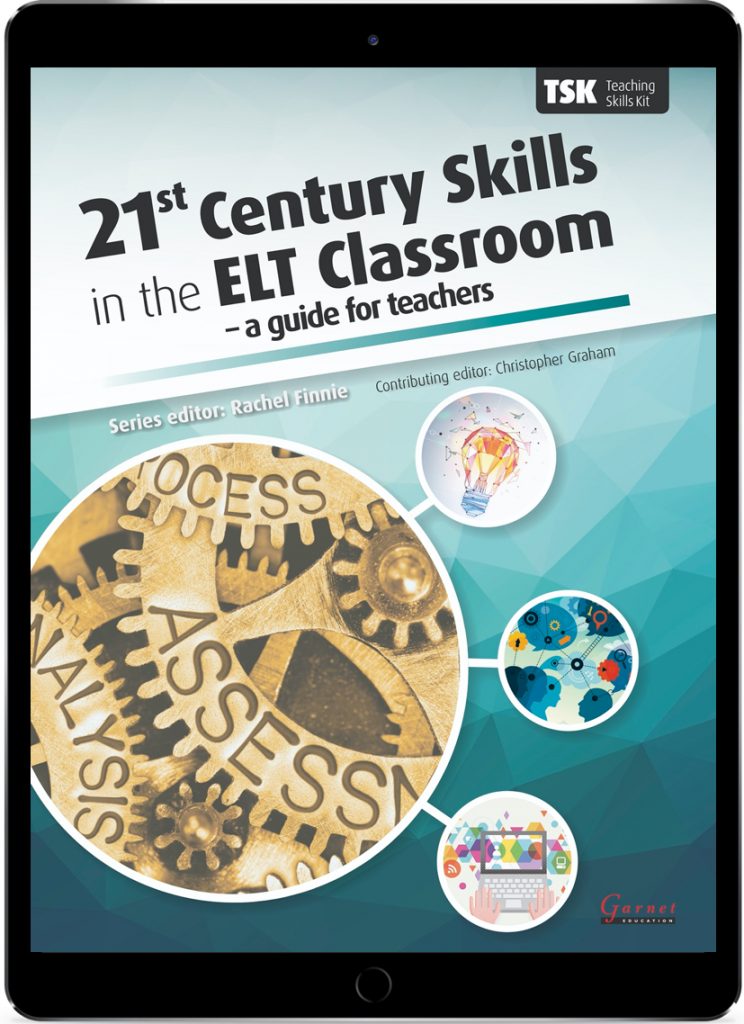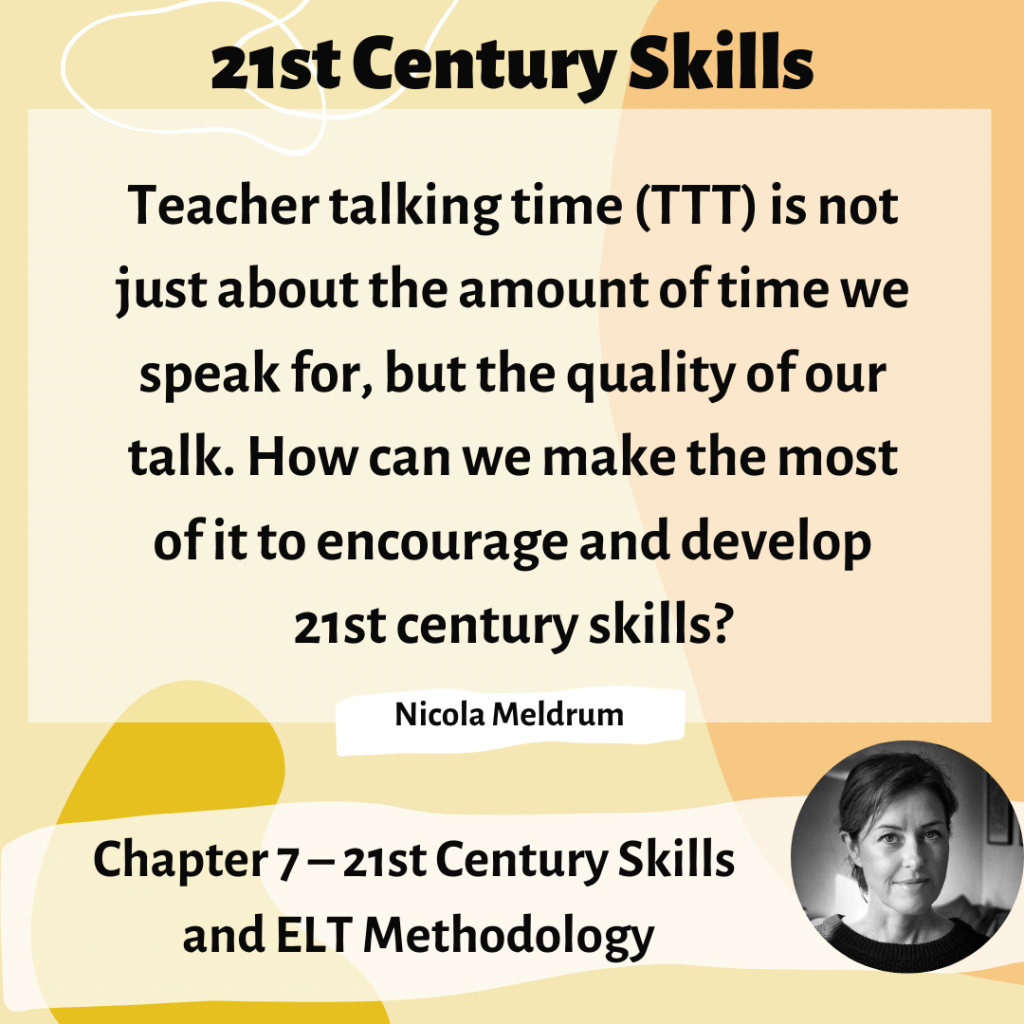
Welcome to our new three-part blog series about the life cycle of an ELT book, specifically our new book, 21st Century Skills in the ELT Classroom – A Guide for Teachers, which you can buy here. Each week we’ll be taking you behind the scenes of the publishing process and giving you an insight into the stages a book goes through, from conception to print, before it’s published. You can read part 1 here and part 2 here. For our third and final part of the series, we went behind the scenes of digital, sales, marketing and social media to find out what happens to the book after it goes to print. Keep reading to find out more!
Creating and selling the eBook |PRODUCTION, DESIGN, DIGITAL AND SALES
Production and Design

21st Century Skills in the ELT Classroom is a bit of an unusual one, as we have published it now as an eBook, and are only just about to publish a physical version – due to the pandemic closing printers down just as we finished production on this title! So, in this instance, the print PDF was passed directly to Sam in Digital, to publish it as an eBook.
Once everything is finalised and has been completely checked through our editorial and production processes, we then make PDFs. We do two versions of these files, a PDF for the printed version of the book and then one for a digital version (used for both eBooks and inspection copies). These files are then sent to print or to our digital department to upload onto our website.
Sam, Digital Media Specialist
Digital
We take the digital PDF from Design to create the eBook edition on our publishing platform. We create and apply to the eBook reader a digital table of contents and any required on-page content such as weblink html overlays that link to the internet related content provided in the book.
We also create a subscription package. The codes for this are handed over to our Marketing department who connect our e-commerce to our publishing platform. On the publishing platform we also manage user access to the eBooks. Each user has their own account and can buy our eBooks to use with their account. Each eBook that is available to buy from the website is then assigned to their personal account (a bit like iBooks). This enables the customer to buy our eBooks from our website.
Alice W, Sales & Marketing Intern
Sales

Not only do we sell to individual customers on our website but we also liaise directly with universities and distributors in the UK and worldwide. We either notify the relevant people that our eBooks are live and ready to buy or we have people contact us. We offer four different delivery methods when selling our eBooks, with these being a registration form (institution provides the number of staff/students and then they can sign up themselves); faux excel (the institution provides us with a number of how many eBooks they need); real excel (the institution provides us with a list of student/staff real names and real emails); and redeem codes (the institution provides us with a number of how many eBooks they need and we provide them with a batch of unique codes). I then liaise with Caroline, our Accounts Administrator, to sort out payment before making a ‘ticket’ with all the relevant information to send to Sam. Sam then creates the logins and sends them to me which I then forward on to the customer.
Promoting the book online and through other marketing channels|MARKETING AND SOCIAL MEDIA
Nathan, Marketing Manager

The job of the Marketing team is to make sure that we let everyone who might be interested in buying the book know that it is available. This includes listing it on our website, sending emails to people who have asked for product updates and posting about it on social media. We also look at what people are searching for in Google and other search engines and optimise the way we talk about the book to help more people discover it.
We also rely on a number of partners to help sell our books. These include our distributors around the world, plus a huge range of bookshops from Amazon to small independents – so we need to make sure that they have the information they need about the book. A lot of this information is sent via a service called Nielsen Bookdata – so we need to make sure that this is accurate and up-to-date. We’ll also send out a press release or review copies to journalists, in the hope that they’ll write a review.
Jaz, Digital Editor
Social Media

Once we are given the go-ahead, we sit down together to discuss ways in which we can promote the book on our social channels. We are a relatively small social media team, and each member of the team also has many other responsibilities within the publishing process that aren’t related to social media. We therefore have to be efficient with our time, and get creative with the resources we have available.

For 21st Century Skills in the ELT Classroom, we decided to dedicate the month of the eBook publication to talking about all things 21st century skills on our social platforms. We dedicated a post to each chapter, as well as coordinating with Marketing to create a 20% discount of the eBook until the end of July. Our Sales & Marketing Intern, Alice, created some eye-catching audiograms of our podcast, ELTtime, in which authors of the book were speaking about their relevant chapters. We also created some vibrant graphics with quotes from each chapter to showcase the tone and vibe of the book itself. After this, we then analyse each post and use this data and information to better future campaigns.


